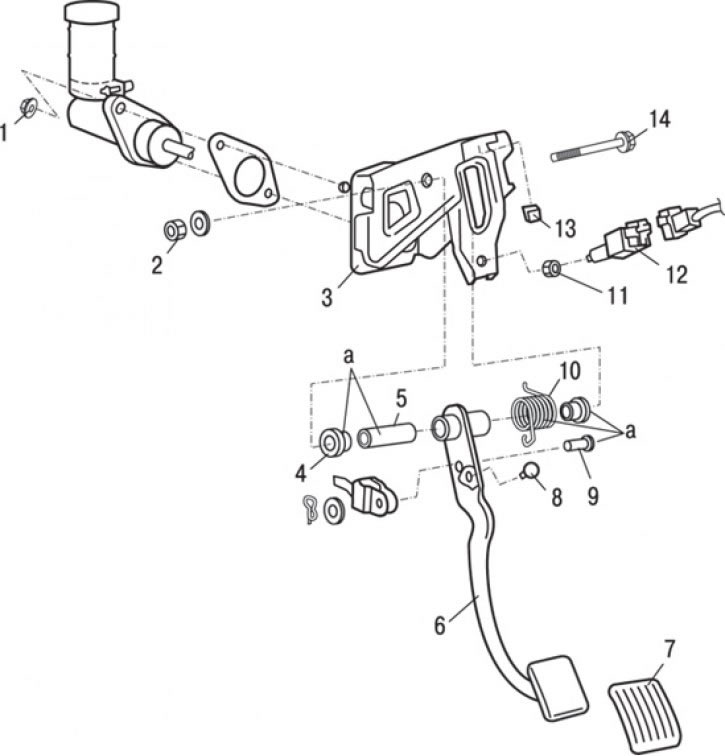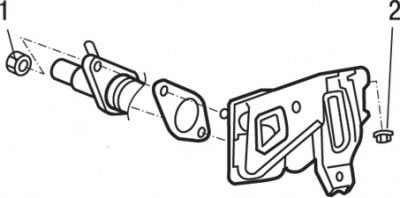Removing

Pic. 10.4. Clutch pedal: a - lubrication points; 1 – a nut of fastening of the main cylinder (13 Nm); 2 - nut (24 Nm); 3 - clutch pedal bracket; 4 - clutch pedal bushing (lubricate); 5 - tube (lubricate); 6 - clutch pedal; 7 - rubber pad of the clutch pedal; 8 - emphasis; 9 - pin with a hole for the cotter pin of the pedal; 10 - return spring; 11 - locknut (13 Nm); 12 - adjusting bolt or clutch release sensor (13 Nm); 13 – a nut of fastening of an arm of the main cylinder (13 Nm); 14 - bolt
To remove the clutch pedal (pic. 10.4) perform the following steps in sequence.
1. Turn away a nut of fastening of the main cylinder of coupling.
2. Turn away a nut of fastening of an arm of the main cylinder of coupling.
3. Remove the pin with a hole for the cotter pin that secures the pedal to the stem.
4. Remove the pedal bracket and clutch pedal assembly.
5. Turn away a nut and take a bolt of fastening of a pedal of coupling to an arm.
6. Remove the return spring.
7. Remove the bushing from the clutch pedal tube.
8. Remove the clutch pedal tube.
9. Remove the rubber pad from the clutch pedal.
10. Remove the stop.
11. Loosen the locknut and turn out the adjusting bolt or the clutch disengagement sensor.
12. Turn away a counternut.
Installation
Attention! Installation is carried out in the reverse order of removal, taking into account the following. For models with 1800 cc engines3 tighten nut 1 first (pic. 10.5) fastening the clutch master cylinder, and then the nuts 2 fastening the pedal bracket.

Pic. 10.5. The sequence of tightening the nuts of the master cylinder (1) and pedal bracket (2) clutch on models with 1800 cc engines3
Attention!
Attention! The pedal bracket cannot be installed correctly if the fixing nuts 2 are tightened first. This is because the stud holes in the bracket are oval.
